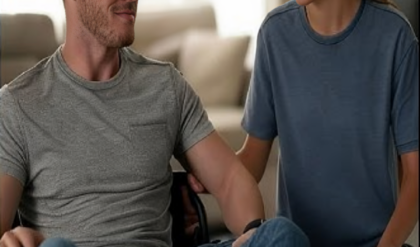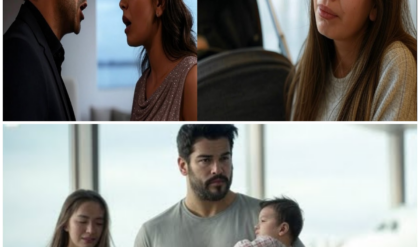Queen Elizabeth was renowned for her determined inscrutability in an era of telling all. Indeed, the mask of the monarch rarely slipped during the more than 70 years she reigned.
Who was she?
No world figure was for so long as inscrutable as Queen Elizabeth II, who died today at Balmoral, aged 96. She leaves us as a mystery, as unknowable as the Great Sphinx. Even when all those around her were stripped by intrusive scrutiny she was left untouched.
That was quite a feat. In the last half of her long reign the Queen found herself in a new world. The saga of the House of Windsor gradually became an invaluable revenue stream for the global celebrity industry, and ultimately the inspiration for the blockbuster Netflix series, The Crown.
But the monarch held firm above all that, keeping her regal composure. She could do nothing to change this new level of attention, and she certainly did nothing to encourage it, but her family lacked her iron discipline. They met the moment by providing a rich melodrama of their own making.
And yet there she remained, Elizabeth Regina, the central figure, bathed in the same relentless flash photography as the others, while remaining glacially aloof.
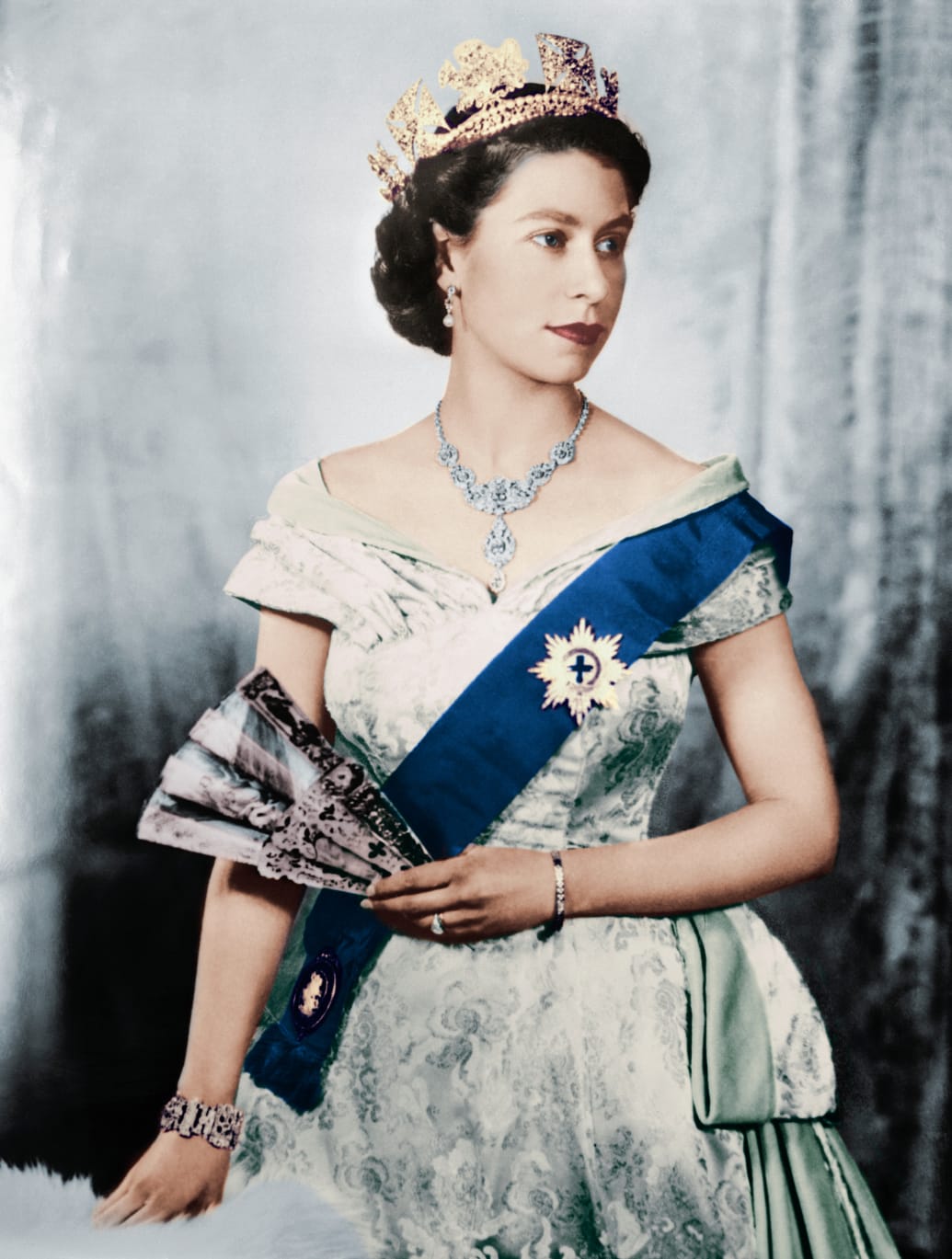
Queen Elizabeth II
Bettmann/Getty
Like every other observer, I was in awe of the performance while, as a journalist, being unable to defeat it, to get behind the mask to the person. She had been a public figure for the whole of my working life and, ultimately, I wrapped her life and mine in a book, part biography and part memoir, The Last Queen. She was inescapable as a subject—not simply because of who she was, but because she did so much to preserve the enduring and peculiar arrangement between the British state and the Windsors.
Other European monarchies had either been swept aside or survived as democratized totems. Largely because of the Queen’s command of her role, the Windsors alone continued to enjoy the scale and trappings of a nineteenth century dynasty.
The foundational influence on Elizabeth II was her father, George VI. He tutored her in the art, so essential in a constitutional monarchy, of maintaining the dialogue between the crown and the state while suppressing any hint of her personal views. She did it so well that the fourteen Prime Ministers who served her never felt that she trespassed on their authority. In fact, many left office enamored of her—even the famously brittle Margaret Thatcher. None was ever heard to murmur a word of interest in republicanism.
When I reviewed that tricky equipoise of royal and political powers, I realized that I knew far more about those Prime Ministers than it was ever possible to know about Elizabeth II. They, of course, could be questioned. In the bear pit of the British parliamentary system, a leader can get destroyed by the ferocity of questions from the opposing party. The monarch could never be questioned. Of her core beliefs we knew nothing. Her immunity to being questioned was always rigidly enforced and absolute.
How was this done?
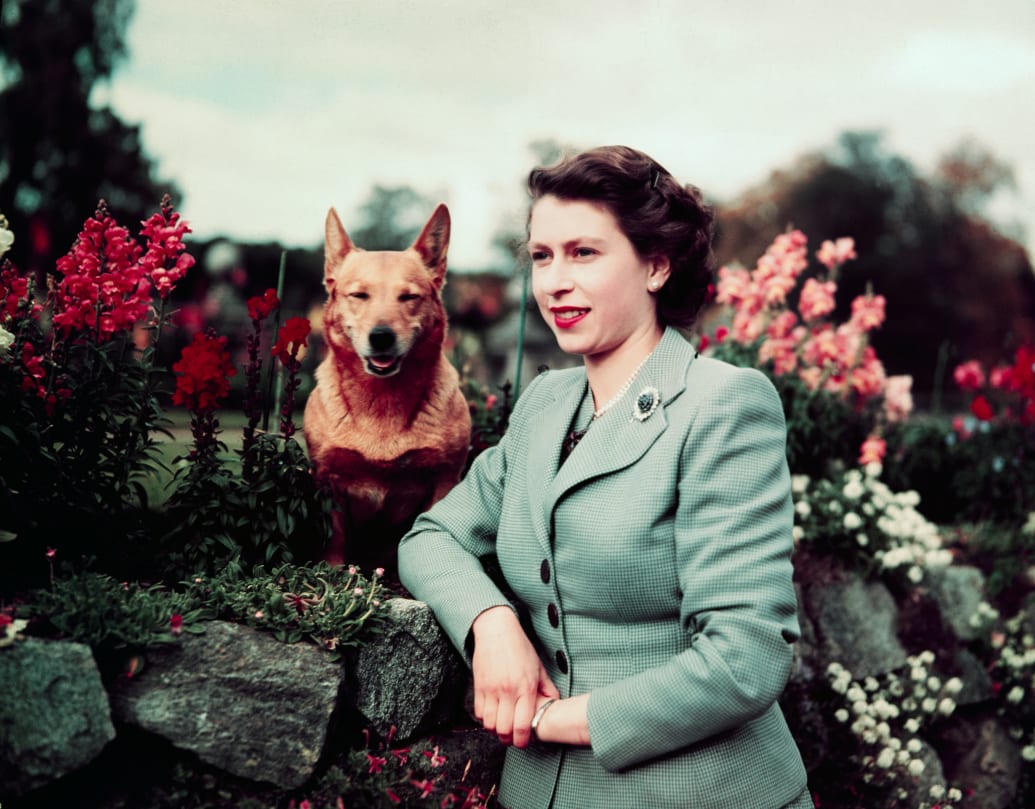
Queen Elizabeth II of England at Balmoral Castle with one of her Corgis September 28, 1952.
Bettmann/Getty
It begins with a glaring paradox: she was unknowable and yet she always felt familiar, as familiar as fame could ever make a celebrity, recognizable in every language but, at the same time, as impersonal as a ubiquitous corporate logo. As it turned out, the most challenging antithesis to that performance and that sense of duty was Princess Diana, as nakedly public as the queen was implacably private. Diana became the greatest celebrity in the world and outshone the monarch in a way that left a presence that has haunted the Windsors ever since.
To achieve that level of fame was an unforgivable offense by the rules of the palace, but they were helpless to counter it. Diana’s celebrity was of an entirely new and different quality: The whole world felt on intimate terms with her. She smashed her way out of the hermetic royal protocols. She bared her tortured soul. She didn’t need to point up the apparent contrast between herself and the queen: Vulnerable young victim versus ice-cold matriarch. Of course, this was far too simple as a judgment, but it played well for Diana and injured the monarch.
“If you believe that you never need to explain yourself, then you can’t control the version of yourself that others may manipulate for their own purposes.”
And that’s one of the weaknesses of being unknowable. If you believe that you never need to explain yourself, then you can’t control the version of yourself that others may manipulate for their own purposes. In fact, that was a problem for the queen long before Diana materialized. In 1966, when scores of school children were buried alive by an avalanche of mining slurry at Aberfan in Wales, the single most shocking disaster thus far in her reign, the queen failed to react spontaneously and visit the grieving parents, suggesting a deficit of empathy.
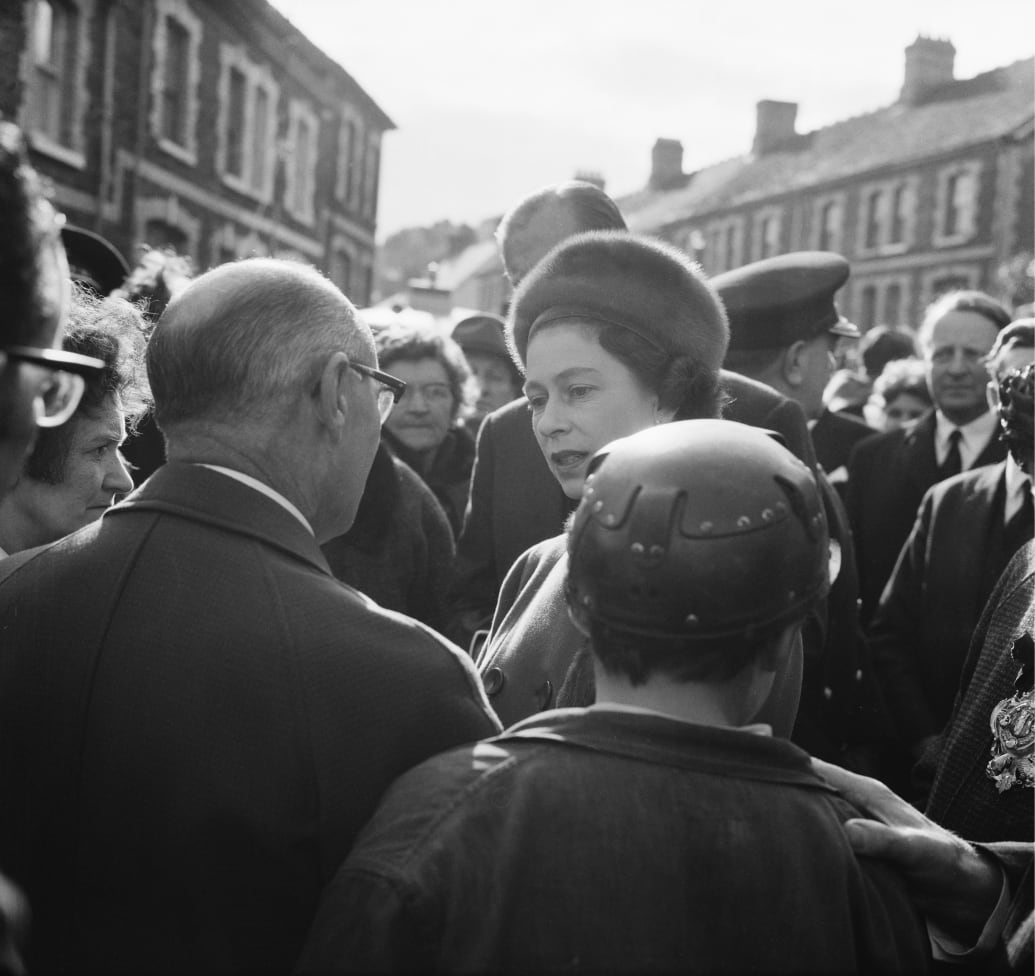
Queen Elizabeth II visits the coal mining village of Aberfan in South Wales, eight days after the disaster in which 116 children and 28 adults were killed, October 29, October 1966. The disaster on 21st October occurred when a colliery spoil-tip collapsed and slid down a nearby mountainside into the village and its two schools.
Evening Standard/Hulton Archive/Getty
That was unfair—she had made the wrong call, believing that it was better that her husband, Prince Philip, should deal with the immediate emergency, that her appearance would get in the way of the rescue operation—but she held back for too long before finally going to Wales.
That was partly because Elizabeth had, by then, given herself over to a non-corporeal figure that she believed to be greater than herself: The monarch. Before her ascent, she had been instructed by her father that the monarchy depended for its legitimacy on the monarch as an immaculate power beyond reproach (though not, surely beyond human feelings).
“Above all things our royalty is to be reverenced, and if you begin to poke about it you cannot reverence it…its mystery is its life. We must not let in daylight on the magic.”
— Walter Bagehot
The most frequently quoted explanation of the cult of sanctity around a British monarch is by Walter Bagehot, the economist and essayist, who wrote in 1867: “Above all things our royalty is to be reverenced, and if you begin to poke about it you cannot reverence it…its mystery is its life. We must not let in daylight on the magic.” But another Victorian economist, Nassau William Senior, demolished the reverential argument by saying, simply, “Our Queen is a phantom, put there not to act, to fill space, to prevent anyone else from being there.”
From the start, Elizabeth followed the first of these views, not the second. She did all she could to sustain the magic, while repelling the daylight. This required enormous discipline. In reaching for that mythical role—and living it—the actual person had always to be secondary. To reveal the real self would have been a weakness. She once said, “They have to see me to believe me.” But the “me” was the myth while the real “me” remained unseen. The mask of the monarch rarely slipped during the more than seventy years that she reigned. It’s hard to imagine any male monarch ever pulling that off, least of all her heir.
The early years of her reign were hard on her. In 1957, when she was thirty-one years old and had been queen for five years, she fell under the scrutiny of James Pope-Hennessy, who was writing a biography of her father’s mother, the cold-blooded Teutonic matriarch Queen Mary.
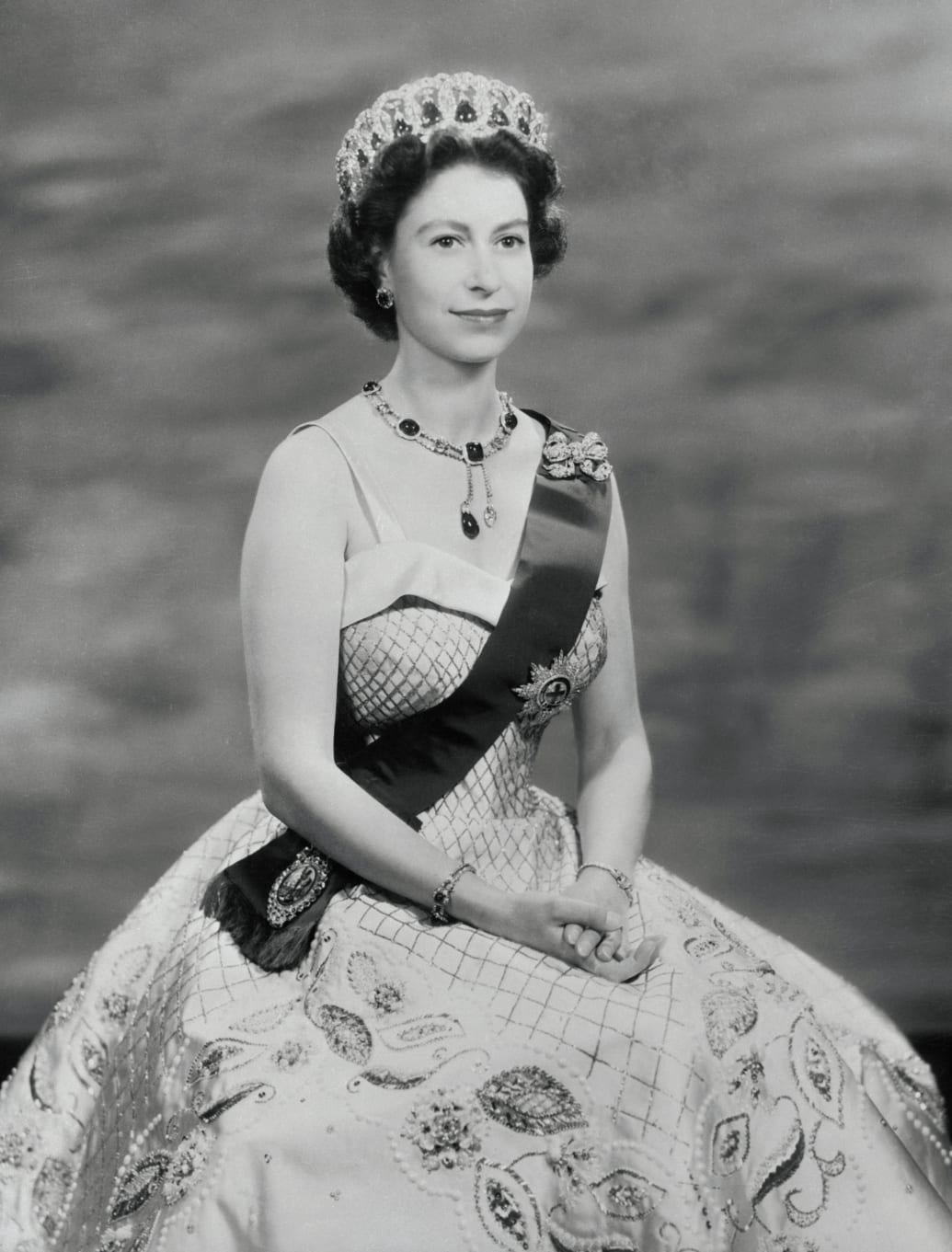
Queen Elizabeth II
Bettmann/Getty
Pope-Hennessy’s description of the young queen never surfaced at the time. It was unearthed by the royal historian Hugo Vickers and published in his 2018 book, The Quest for Queen Mary. It says something about the Queen’s aversion to daylight (and the shield of her privacy that was always provided) that no other glimpse of her during the rest of her life comes close to the acuity of this one:
“By no stretch of the imagination can this Queen be called an historical figure. About the lower part of the face, which juts out more than one expects, she has a slight look of Queen Mary and Queen Charlotte but that is all. She looks a little careworn, with lines from nose to mouth, and could easily arouse one’s compassion were it not for some element which is hard to define—smugness would be too crude and unkind a word—it is rather that she clearly does not feel inadequate. She is not shy, but she is clearly living at great tension, and does not give an impression of happiness…one feels that the spring is wound very tight.”
“The more she rose to the myth of her station, the more dangerous it became to think about demystifying it.”
“A little careworn” was an early indication of the struggle she was having with the role. She had, on becoming Queen, knowingly removed herself from the freedom to behave naturally and became the servant of rituals, especially in the presence of others.
Those approaching her had to bow or curtsy and do so again when retreating. Few could do that with any elegance. Nobody could casually touch her. It seemed all very Georgian and required a legion of flunkeys to oversee the genuflections. But the more she adapted to it—the more she rose to the myth of her station—the more dangerous it became to think about demystifying it.
She only tried that once. In June, 1969, a BBC documentary special titled, simply, Royal Family, aired on British television, where it was watched by 40 million people, and abroad, where the audience was 400 million.
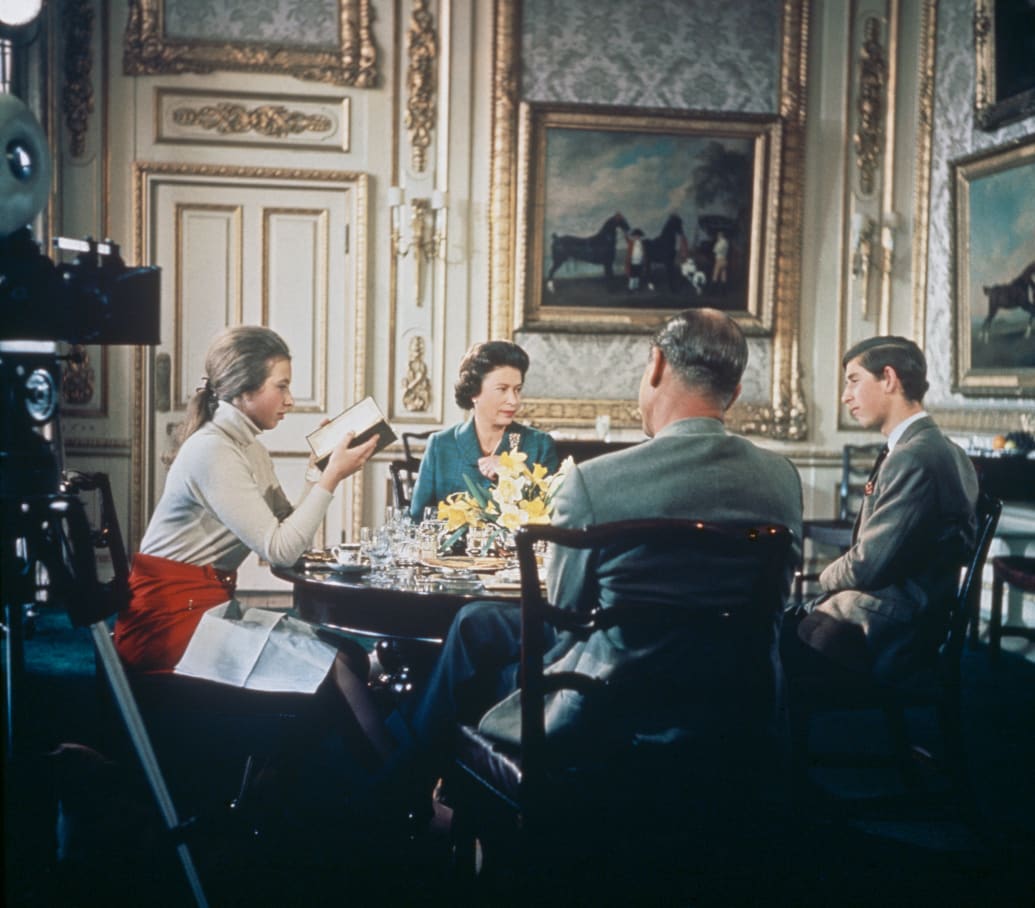
Queen Elizabeth II lunches with Prince Philip and their children Princess Anne and Prince Charles at Windsor Castle in Berkshire, circa 1969.
Hulton Archive/Getty
It had come about after years of public rumbling about the remoteness of the queen and the privileges enjoyed by her family. Prince Philip had encouraged it: “It is quite wrong that there should be a sense of remoteness or majesty. If people see, whoever it happens to be, whatever head of state, as individuals, as people, I think it makes it much easier them to accept the system and feel part of the system.”
Philip himself had never quite felt part of the system. But he had made a fundamental error: The core quality of the brand was majesty. It was an exact word suggesting a stature that was a little short of being divine – a sort of secular papacy expressing grace and authority in partnership. The origin was medieval. The Tudors struggled to shake off Rome as God’s throne on earth and match it with a native equal, and it could only be done by elevating the monarch as a demi-god. The problem in the twentieth-century was that any effort to demystify “majesty” and try to make it seem normal would, inevitably, end up looking fake.
However, the queen reluctantly accepted advice that she should collaborate and allow the documentary cameras to follow her for a year, with the idea that she would be seen as a person with a real job, in public, and a real family, in private.
“The broadcast was a disaster—although the huge audiences lapped it up.”
The broadcast was a disaster—although the huge audiences lapped it up. There was fun to be had, at the queen’s expense, by social critics trying to place the Windsors in one of the tiers of British society. Were they landed aristocracy with an unusually large number of very large houses and estates? Were they bourgeois arrivistes with more money than taste? Or were they conning the world that they were open, ordinary people who had by some misfortune been recruited by a casting agency to perform in a long-running and extremely opulent soap opera?
The most exacting critic turned out to be the great BBC documentarian of the natural world, David Attenborough, calling on his anthropological knowledge. He said that the monarchy was an institution that “depends on mystique and the tribal chief in his hut. If any member of the tribe ever sees inside the hut, then the whole system of the tribal chiefdom is damaged and the tribe eventually disintegrates.”
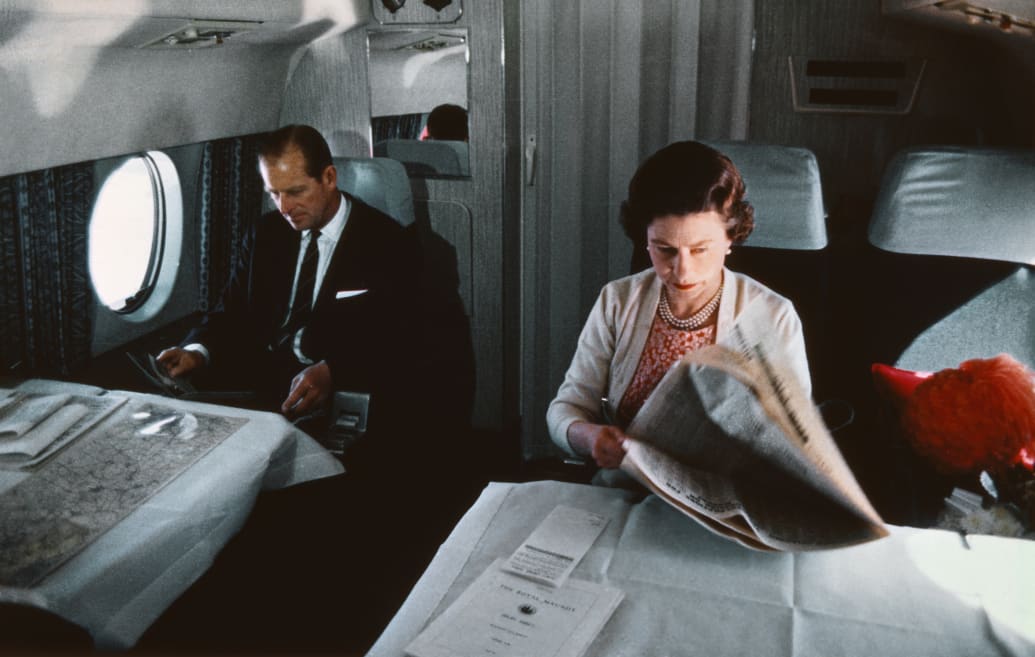
Queen Elizabeth II and Prince Philip fly back from a visit to Yorkshire in an Andover of the Queen’s Flight, in a photo taken during the filming of the joint ITV-BBC film documentary The Royal Family.
Bettmann/Getty
After its initial broadcasts, the documentary was never seen again in the twentieth century, although a copy was discovered and released on YouTube in 2021. My Daily Beast colleague Tim Teeman watched it, relaying to readers what it showed, and why it would have mortified the privacy-guarding Queen Elizabeth.
“Only the passage of time can filter out the ephemeral from the enduring”
Of course, it could be argued that this astonishing performance of inscrutability was possible because Elizabeth was a natural cipher: Her sublimation to a higher force was easy because it concealed a vacuum. If the whole drill of her life, the rituals, the protocols, the prescribed duties, were suddenly to fall away, who was there? At the very least, there was a woman who had fully understood what was expected of her, and delivered on it—both publicly and privately. Crucially, over the years, she slowly mastered those parts of the role that had to remain opaque.
It’s natural to think of the monarchy as a stand-alone institution, but it isn’t. A good definition of it came in 1985, from a Tory party patriarch, Julian Amery, who said it was a “collective monarchy,” meaning that it was part of a shadow power system including parliament, the courts and the executive, operating without formalized constitutional boundaries.
Elizabeth II was at the center of it and became expert in how the crown could be discreetly effective. Amery claimed that this system ensured that elected ministers could only shift policy slightly and “then only if that is acceptable to the collective crown.”
“She kept a diary, and at the end of every day she set down her account of it. How many years will pass, I wonder, before it will be publicly accessible?”
The queen was naturally in sympathy with that kind of conservatism. In 2002, in a speech marking her fiftieth year on the throne, she said, “Only the passage of time can filter out the ephemeral from the enduring.” But the problem of the last decade of her reign was that too much about the way the royal household functioned had endured.
The heir was clearly more and more restless. Charles felt that the whole Buckingham Palace machine was obsolescent, becoming in the twenty-first century more obviously a hangover from another age. But he could not make any decisive moves to sort it because they would be seen as criticisms of his mother. (And in the past she had bemoaned Charles’s lack of executive skills and his innumeracy.)

Queen Elizabeth II arrives for the state banquet in her honor at Schloss Bellevue palace on the second of the royal couple’s four-day visit to Germany on June 24, 2015 in Berlin, Germany.
Sean Gallup/Getty
The legacy of a reign as long as the queen’s is bound to leave many things that need fixing urgently, and not just the lumbering anachronism of Buckingham Palace. Somewhere though, in the vast, accumulated personal museum of Elizabeth II’s life there is what might well be the key to who she really was, her own peeling away of the mask. She kept a diary, and at the end of every day she set down her account of it. How many years will pass, I wonder, before it will be publicly accessible? Given that Prince Philip’s will is under seal for ninety years, we will all be long dead.
